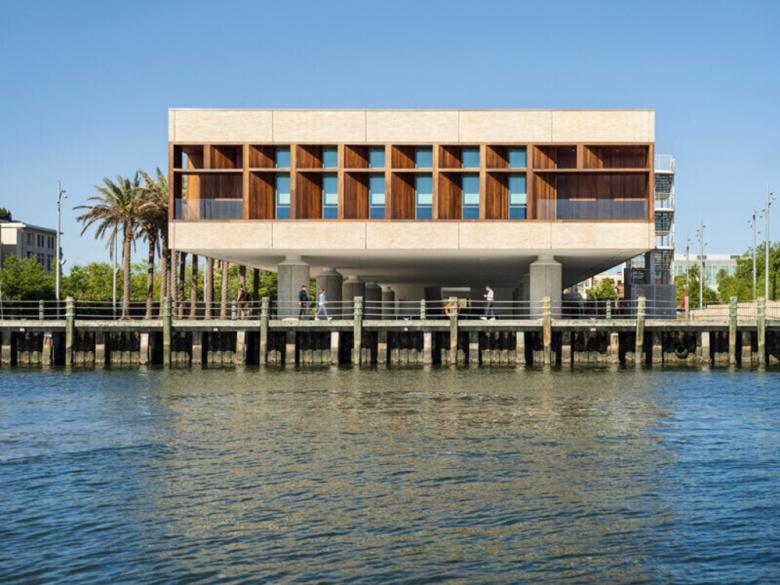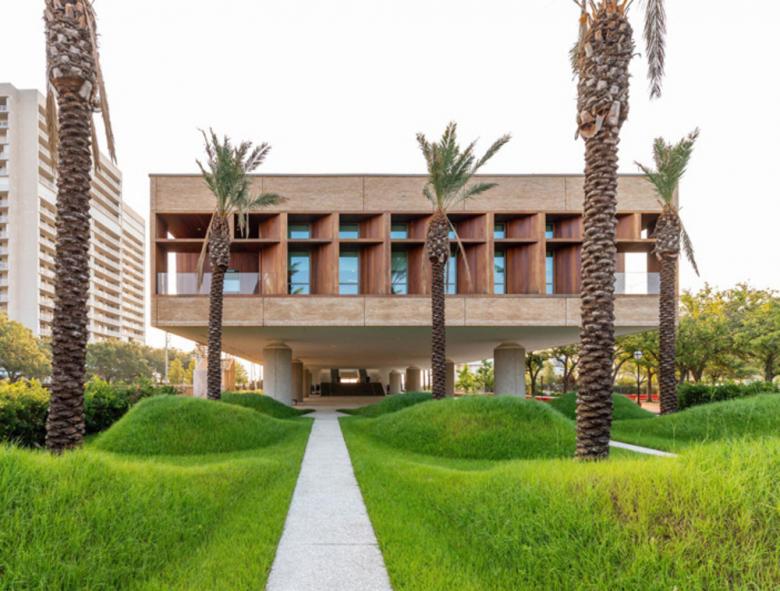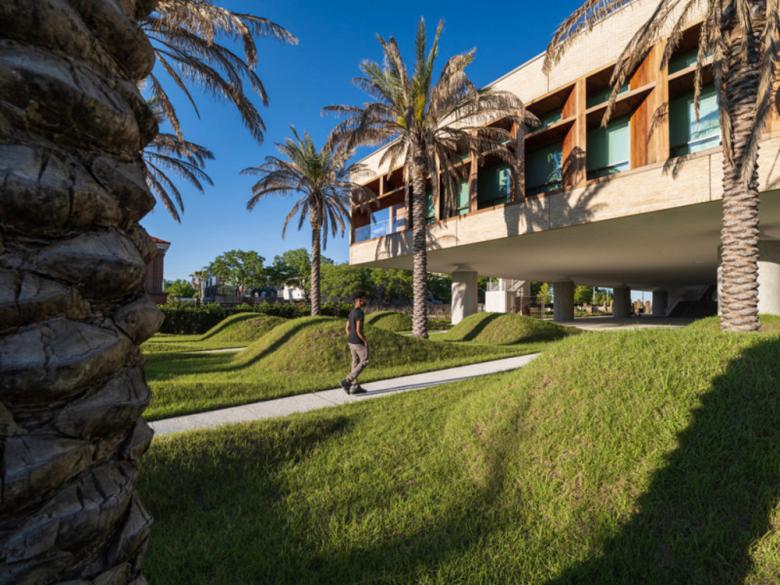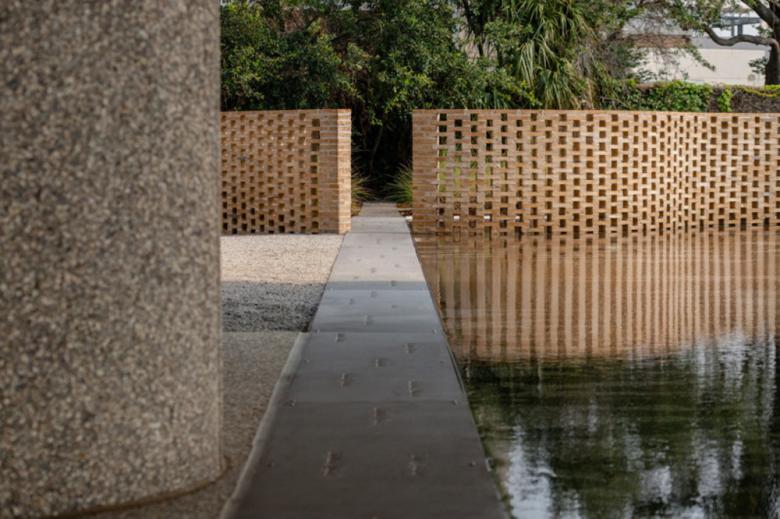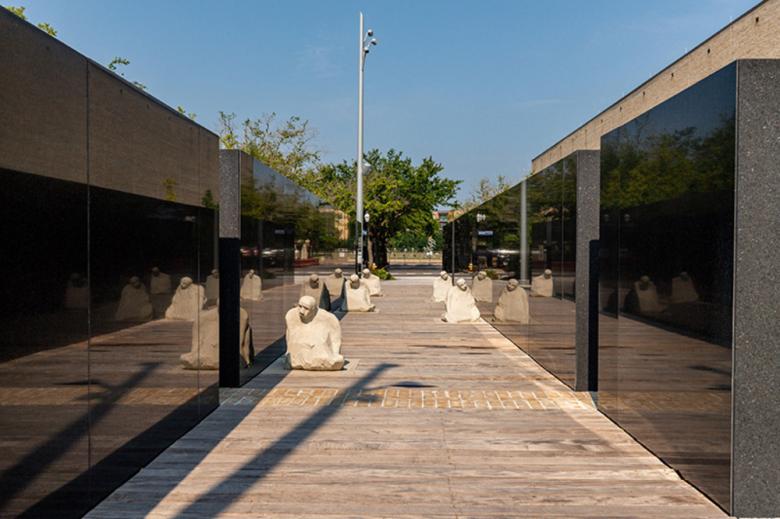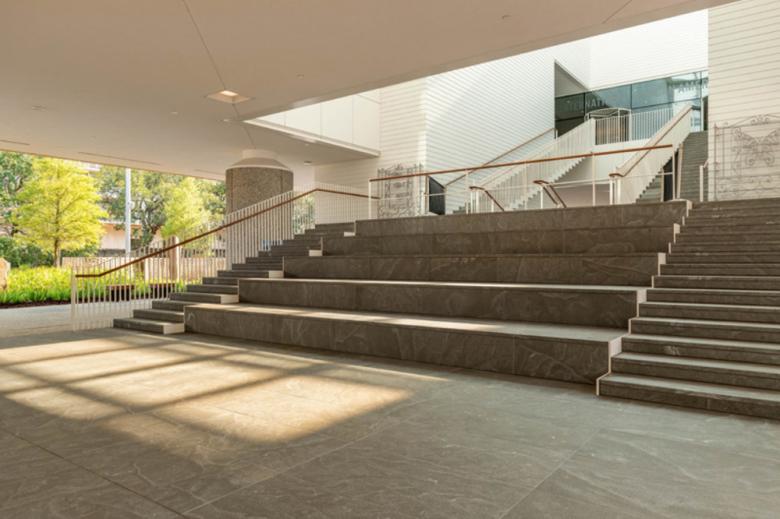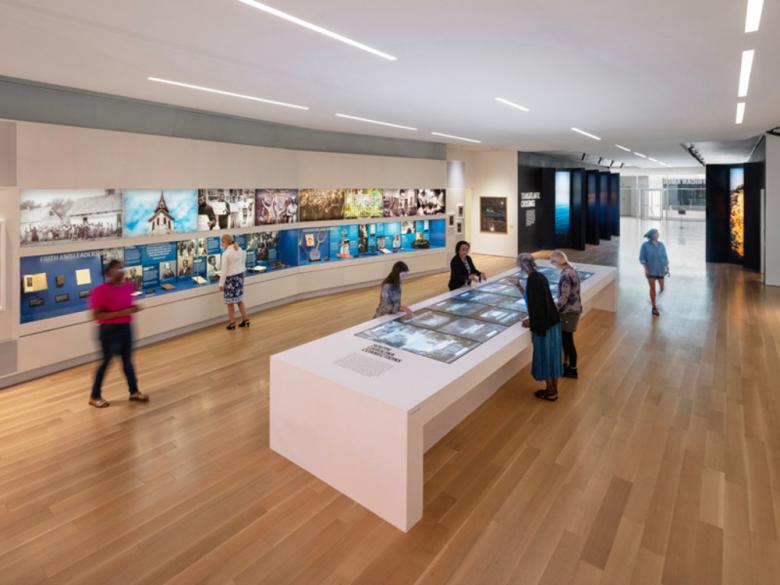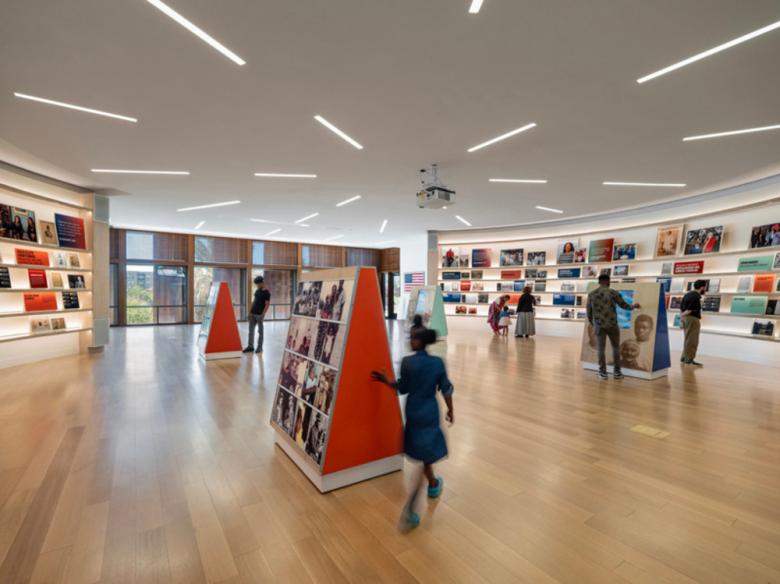IAAM in Pictures
John Hill
28. June 2023
Photo © Sahar Coston-Hardy/Esto (All images and captions courtesy of v2com)
Two decades in the making, the International African American Museum (IAAM) opened to the public on June 24, 2023, in Charleston, South Carolina, on “hallowed ground” — waterfront land that centuries ago served as a port of arrival for enslaved Africans.
IAAM's building was designed by Pei Cobb Freed with Moody Nolan; the late Henry Cobb was lead designer on the project. “As the place at which many thousands of Africans from diverse cultures first set foot in North America,” Cobb had written of the site, “Gadsden’s Wharf is not just the right place to tell this story; it is hallowed ground.” In turn, Cobb and the rest of the design team, which also included landscape design by Hood Design Studio and exhibition design by Ralph Appelbaum Associates, the challenge was “to build on this site without occupying it.” The building, as such, is a one-story rectilinear volume (84 feet wide, 426 feet long) lifted 13 feet above the ground on 18 circular columns. The photographs that follow capture the way the building is lifted above the site; show how the landscape is shaped physically and symbolically; and give a sense of how the exhibition spaces work.
